Navelbine 50mg Tablets
| Pack Size | Price | Price / Unit | Quantity |
|---|
Want to order in bulk / B2B price ? | Send Inquiry |
We do not sell this product
Category: Anti Cancer Tags: Damson Pharmacy, Navelbine 50, Navelbine 50mg, Vinorelbine 50 Manufacture: Pierre Fabre Group

| SKU | 11353 |
| Manufacturer | Pierre Fabre Group |
| Categories | Anti Cancer |
| Delivery Time | 10 - 14 Working Days |
| Strength | 50mg |
Introduction to Navelbine 50mg Tablets
Navelbine 50 mg is a medication used in the treatment of cancer. Its generic name is “vinorelbine tartrate,” and it belongs to a class of drugs known as Vinca alkaloids. Navelbine is commonly used as a chemotherapy agent to combat various types of cancer, particularly lung cancer and breast cancer. It works by interfering with the growth and division of cancer cells, ultimately slowing down or stopping their proliferation.
Uses of Navelbine 50mg
Navelbine 50 mg tablet, containing the active ingredient vinorelbine tartrate, is a chemotherapy medication primarily used for the treatment of certain types of cancer. It is classified as an antineoplastic or anticancer agent and belongs to the Vinca alkaloid class of drugs. Here are some of the main uses of Navelbine 50 mg tablet:
- Non-Small Cell Lung Cancer (NSCLC)
- Metastatic Breast Cancer
- Other Cancers
It’s important to note that Navelbine 50 mg is a prescription medication, and its use should be carefully determined by a qualified healthcare provider experienced in oncology. The treatment plan will depend on factors such as the type and stage of cancer, the patient’s medical history, and the potential benefits and risks of the medication. As with any chemotherapy treatment, discussions between the patient and their healthcare provider are crucial in making informed decisions about the course of treatment.
How Does Navelbine 50 Works?
Navelbine 50 mg (vinorelbine tartrate) works as an anticancer medication by interfering with the growth and division of cancer cells. It is classified as a Vinca Alkaloid, a type of chemotherapy drug that targets the microtubules within cells. Microtubules are important components of the cell’s structure and are involved in various cellular processes, including cell division.
Here’s how Navelbine 50 mg works:
- Microtubule Disruption
- Mitotic Arrest
- Apoptosis (Cell Death)
- Anti-Angiogenesis Effects
It’s important to note that Navelbine’s mechanism of action is not specific to cancer cells; it affects rapidly dividing cells in general. This is why chemotherapy drugs like Navelbine can also affect healthy cells in the body that divide rapidly, such as those in the bone marrow (responsible for blood cell production) and the lining of the gastrointestinal tract.
While Navelbine’s mode of action is effective against rapidly dividing cancer cells, it can also result in side effects due to its impact on healthy cells. The goal of using Navelbine and other chemotherapy drugs is to selectively target and destroy cancer cells while minimizing the impact on normal cells. The treatment plan and dosing schedule are carefully designed by healthcare providers to achieve the best possible balance between treating the cancer and managing side effects.
Side Effects of Navelbine 50mg
Common Side Effects
- Nausea or vomiting
- Fatigue
- Hair loss
- Constipation or diarrhea
- Loss of appetite
- Mild muscle or joint pain
- Mouth or throat sores
- Mild injection site reactions
- Low blood cell counts
Serious Side Effects
- Severe allergic reactions
- Heart or lung problems
- Liver or kidney issues
- Nerve damage (neuropathy)
- Blood clots
- Infections due to low immunity
- Suppression of bone marrow function
- Secondary cancers (rare)
- Eye or vision problems
- Gastrointestinal complications
Dosage of Navelbine
Warning & Precautions
- Administration by Healthcare Professionals
- Pregnancy and Breastfeeding
- Bone Marrow Suppression
- Increased Risk of Infections and Bleeding
- Allergic Reactions
- Liver and Kidney Function
- Lung Problems
- Neurological Symptoms
- Heart Function
- Gastrointestinal Issues
- Secondary Leukemia
- Interaction with Other Medications
Safety Advice
- Medical Supervision
- Dosage and Schedule
- Pregnancy and Contraception
- Breastfeeding
- Blood Counts
- Preventing Infections
- Handling IV Infusions
- Heart Health
- Lung Health
FAQs – Frequently Asked Questions
1. What is Navelbine 50 mg used for?
Ans. Navelbine 50 mg is a chemotherapy medication used to treat certain types of cancer, including non-small cell lung cancer and metastatic breast cancer.
2. How is Navelbine 50 mg administered?
Ans. Navelbine 50 mg is typically administered as an intravenous (IV) infusion by healthcare professionals in a clinical setting, such as a hospital or cancer treatment center.
3. How often will I receive Navelbine 50 mg treatment?
Ans. The frequency of Navelbine 50 mg treatment will be determined by your healthcare provider based on your specific cancer type and treatment plan.
Be the first to review “Navelbine 50mg Tablets” Cancel reply
Related Products
Anti Cancer
Anti Cancer
Anti Cancer
Anti Cancer
Anti Cancer

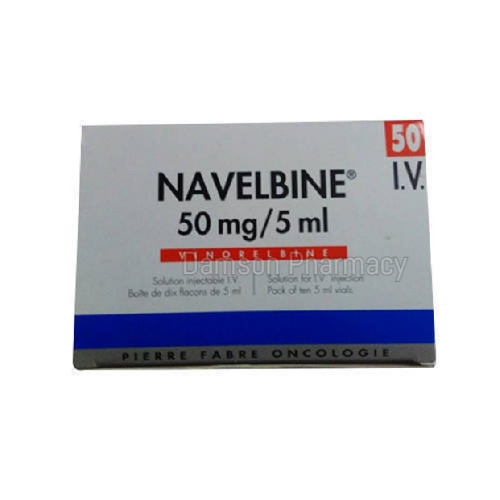
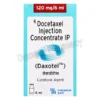
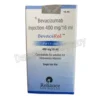
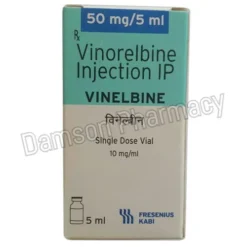
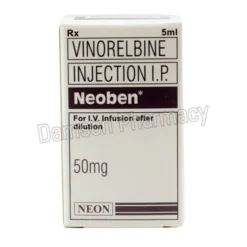



Reviews
There are no reviews yet.